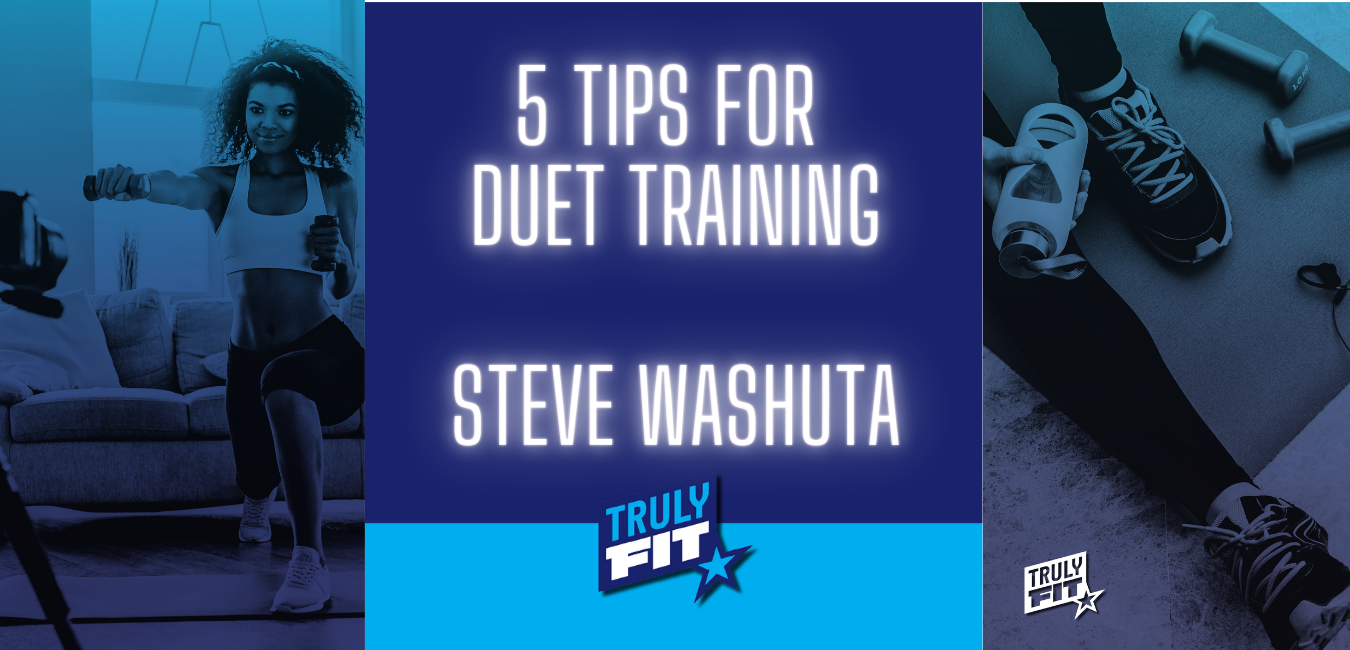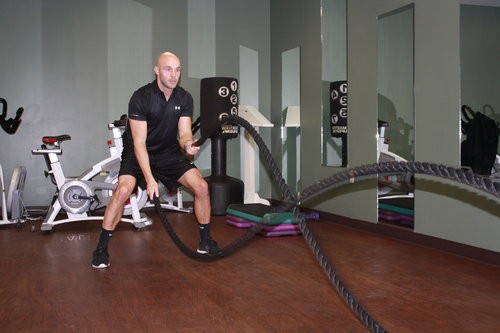
Duet Training – Steve Washuta

Guest: Steve Washuta
Podcast Release Date: 5/10/2021
CLICK FOR AUDIO OF PODCAST
Welcome to Trulyfit the online fitness marketplace connecting pros and clients through unique fitness business software.
Steve Washuta: Duet training, I’m here to tell you the five reasons why it’s so different from training one on one. Reason number one: goals, you have to sit down with both people in the duet and find out their goals. Now, you would do that anyway, in a consultation, right, and a one-on-one training? The difference here is, you’re going to have to be honest with both of your clients here, collectively, and tell them if your goals are two contrasting, this is not going to work.
I don’t care how good of a trainer you are. If you have, let’s say a husband, wife, and the husband wants to gain 10 pounds of muscle, and the wife wants to lose 16 pounds, you’re not going to be able to provide a great one-hour training session for both of those clients, you’re just not going to be able to do it, you’re much better telling them right there and then, instead of embarrassing yourself that this is not going to work.
Unless you guys have one day, let’s say you guys have a cardio day that you work together, and we do 45 minutes of some sort of hit training, that’s fine. But if we have to work together three or four or five days a week, and your goals are that contrasting, I can’t build a proper workout for both of you and watch both of you at the same time. And cue both of you at the same time.
Number two, prior to duet training have a session with each of the first, prior to jumping into the duet, they’re not going to care. They’re already paying for your time and energy and efforts here. If you tell them even if you want to split that session up, let’s say you typically do 60-minute sessions 30 minutes with one client 30 minutes with the other, just work with them one on one. Not only does it give you a sense of who they are as a person, not in front of the other person in the duet but it shows you the nuances of how they do things. So you have a better understanding of your client when you put them into that duet such situation.
Number three: timed not repetition exercises for duet training. You want to do timed exercises, when you work with a duet I can give you a host of reasons why. I’ll try to be brief. Number one. Again, if you are counting repetitions for both clients, you can not at the same time verbal cue and tell them what they’re doing right or wrong. Or give them motivation, right 345-789? How are you supposed to count to different people’s repetitions? Meanwhile, tell them what’s going on what’s wrong, you have some knee valgus here, you’re putting too much pressure on your toes, you’re not getting to the depth of your squat, you can’t do both at the same time.
There’s a bunch of other reasons why you use time. Let me give you another example if you don’t buy that one. So a second one is let’s say I have client A and client B do 20 jump squats, client A finishes in 23 seconds, client B finishes in 40 seconds.
That’s a 17-second differential. That’s not that odd for that to happen, given the fact that most of the time your duet isn’t going to be exactly on the same fitness level. Now if the person in better shape, finishes 17 seconds earlier, the next time you start an exercise, the person in better shape already has an advantage. Now multiply that over the 20 exercises you may do in a session. And that’s exponential, that more energy and more rest time over the person who is in worse shape. How does that make sense? So it’s not going to work out if you’re doing a duet, use time and don’t use repetitions.
Number four use partner exercises in duet training. You can look up a host of these partner exercises on the internet. There are different ways in which you can talk about partner exercises. So one is actually working in concert in sync doing the same thing and you needing your partner to do it. So for example, plank hand slaps, both partners are on the plank, they lift their hand up, they touch the left hand for the left hand, and touch the right hand at the right hand. And so on and so forth.
Then there’s a partner exercise where one is responsible for the finishing of the exercise. So for example, you have somebody doing a wall squat that is untimed. They do that wall squat until the other person has done 25 push-ups, let’s say right, so that is a case where you can do a repetition because there’s only one person who’s involved in the repetitions during that time. It makes sense. So 25 repetitions of push-ups, the other person holds an untimed wall squat until their partner has finished it, and they’re on the Hawks.
So those are two different ways in which you can have partner exercises, they’re going to do it, they want to work together, make sure you do partner exercises. And fifth, last but not least, very obvious here. Make it fun. As trainers, we should always provide a high-value experience for our clients even in one on one sessions. But even more so in a duet, you’re probably getting more money for that hour working with two people and you deserve to give them a high-value experience. But in addition to that, there’s a reason why they chose to work out together.
They probably want more of a fun experience. It’s not just about meeting goals in duet training. If it was about meeting goals, they would work individually. Thanks for joining us on the Trulyfit podcast. Please subscribe, rate, and review on your listening platform. Feel free to email us as we’d love to hear from you.
Thanks again!

CLICK FOR AUDIO OF PODCAST
YOUTUBE VIDEO: 5 Tips for Duet Training




